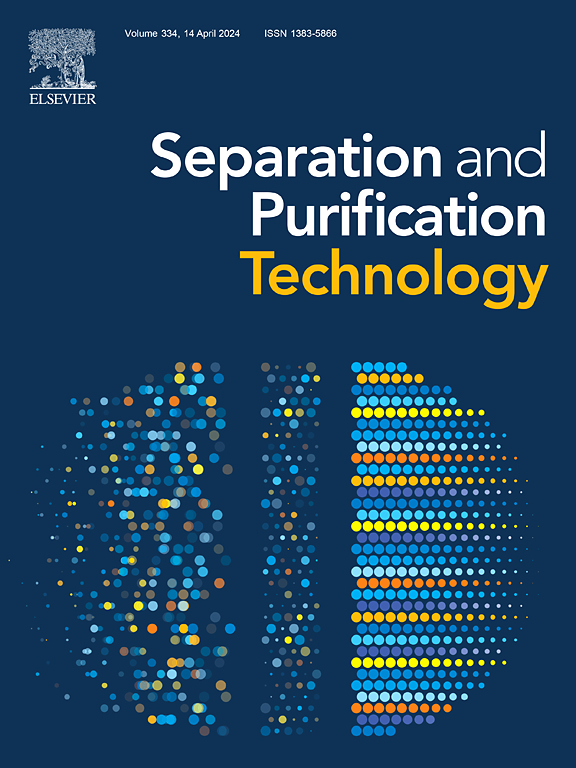Low pressure thin film membranes with cellulose nanocrystals derived from Cannabis sativa for enhanced dye and salt removal
IF 8.1
1区 工程技术
Q1 ENGINEERING, CHEMICAL
引用次数: 0
Abstract
Cellulose nanocrystals (CNCs) are gaining popularity as nanomaterials in membrane-based separation processes due to their environmental friendliness and sustainability. Thin film nanocomposite (TFN) membranes containing glutamic acid modified CNCs dispersed within a polyamide (PA) film were produced in this study using an interfacial polymerization (IP) reaction over a polysulfone (PSF) substrate for low-pressure nanofiltration (NF). To characterize the membranes, FTIR, SEM, AFM, and contact angle analysis were utilized. The resulting CNC-GLU TFN membranes (0.10 wt%) were more hydrophilic and smoother than the comparable thin film composite (TFC) membrane. The CNC-GLU TFN membrane outperformed pristine TFC membranes with a pure water flux of 15.45 ± 1.03 L/m2h (400 kPa), high dye rejection (99.83 % for methylene blue, 90.63 % for methyl orange) and salt removal (MgSO4 = 86 %; NaCl = 38 %). This was attributed to the increased hydrophilic active layer, Donnan exclusion, and steric hindrance. Furthermore, the TFN membrane effectively removed MB and MO dyes from wastewater and demonstrated good operational stability after six cycles. These findings revealed the enormous potential of these membranes in wastewater treatment, separation, and purification in a wide range of industrial applications.


含有大麻提取的纤维素纳米晶体的低压薄膜,可提高染料和盐的去除率
本文章由计算机程序翻译,如有差异,请以英文原文为准。
求助全文
约1分钟内获得全文
求助全文
来源期刊

Separation and Purification Technology
工程技术-工程:化工
CiteScore
14.00
自引率
12.80%
发文量
2347
审稿时长
43 days
期刊介绍:
Separation and Purification Technology is a premier journal committed to sharing innovative methods for separation and purification in chemical and environmental engineering, encompassing both homogeneous solutions and heterogeneous mixtures. Our scope includes the separation and/or purification of liquids, vapors, and gases, as well as carbon capture and separation techniques. However, it's important to note that methods solely intended for analytical purposes are not within the scope of the journal. Additionally, disciplines such as soil science, polymer science, and metallurgy fall outside the purview of Separation and Purification Technology. Join us in advancing the field of separation and purification methods for sustainable solutions in chemical and environmental engineering.
 求助内容:
求助内容: 应助结果提醒方式:
应助结果提醒方式:


